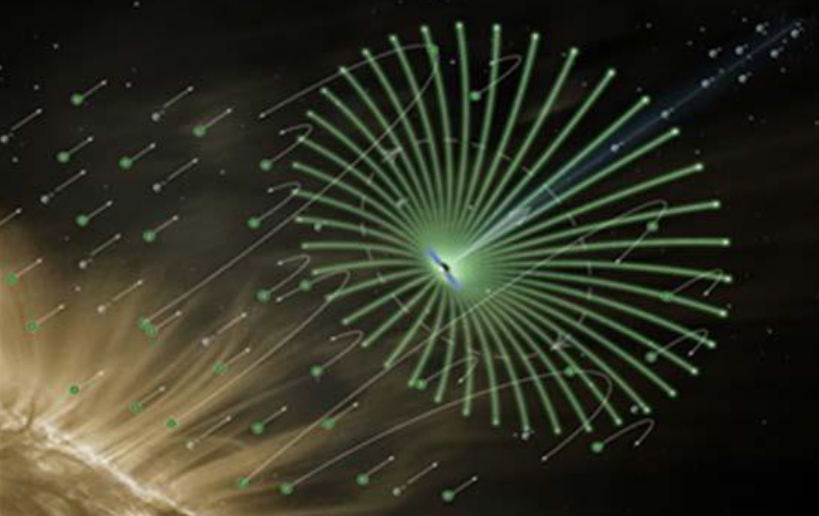Bruce Wiegmann
NASA MSFC
NIAC 2014 Phase I Bruce Wiegmann Final Report HERTS
Rational The motivation for this technology comes from the Heliophysics Decadal Survey. The Heliophysics Decadal Survey, Section 10.5.2.7 states in part; “… recent in situ measurements by the Voyagers, combined with all-sky heliospheric images from IBEX and Cassini, have made outer-heliospheric science one of the most exciting and fastest-developing fields of heliophysics… The proposed Interstellar Probe Mission would make comprehensive, state-of-the-art, in situ measurements…required for understanding the nature of the outer heliosphere and exploring our local galactic environment.” It goes on to say, “The main technical hurdle is propulsion. Advanced propulsion options should aim to reach the Heliopause considerably faster than Voyager 1 (3.6 AU/year)… It has high priority for the Solar and Heliospheric Physics (SHP) Panel that NASA develops the necessary propulsion technology for visionary missions like The Solar Polar Imager (SPI) and Interstellar Probe to enable the vision in the coming decades.” The concept proposed herein has been named the Heliopause Electrostatic Rapid Transit System (HERTS) by the MSFC proposing team. The HERTS is a revolutionary propellant-less propulsion concept that is ideal for deep space missions to the outer planets, Heliopause, and beyond. It is unique in that it uses momentum exchange from naturally occurring solar wind protons to propel a spacecraft within the heliosphere. The propulsion system consists of an array of electrically biased wires that extend outward 10 to 30 km from a rotating spacecraft This idea has been explored and recently published in the open literature—primarily by Pekka Janhunen of the Finnish Meteorological Institute (FMI). This past year, MSFC’s Advanced Concepts Office (ACO) performed a top level feasibility study of this concept and determined that the HERTS system can accelerate a spacecraft to velocities as much as three to four times that possible by any realistic extrapolation of current state-of-the-art propulsion technologies—including solar electric and solar sail propulsion systems. Moreover, it can be reasonably expected that this system could be developed within a decade and provide meaningful Heliophysics Science in the 2025-2030 timeframe. Physical Principles: The basic principle on which the HERTS operates is the exchange of momentum between an array of long electrically biased wires and the solar wind protons, which flow radially away from the sun at speeds ranging from 300 to 700 km/s. A high-voltage, positive bias on the wires, which are oriented normal to the solar wind flow, deflects the streaming protons, resulting in a reaction force on the wires—also directed radially away from the sun. Over periods of months, this small force can accelerate the spacecraft to enormous speeds—on the order of 100-150 km/s (~ 20 to 30 AU/year). The proposed HERTS can provide the unique ability to explore the Heliopause and the extreme outer solar system on timescales of less than a decade. It is significantly more effective than any other near-to-mid-term propulsion system for deep space missions, meshes well with heliospheric science payloads, and could be implemented in the 2025-2030 timeframe. The Heliopause Electrostatic Rapid Transit System (HERTS) fully supports NASA’s vision to “lead advances in space” by providing a revolutionary, in-space propulsion system that can open the frontier of Heliophysics to new discovery. With the performance and benefits of a HERTS mission, the Heliospheric physics community will have at its disposal the ability to carry out Heliophysics missions with one-way Earth to Heliopause trip times of less than 10 years. This study is a necessary step between a scientific dream and engineering development.































